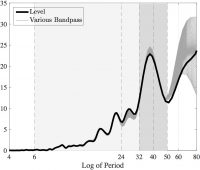
On Wednesday, I am participating to the workshop “New Developments in Macroeconomics” at University College London. I will present my joint work with Paul Beaudry and Dana Galizia,: “Putting the Cycle Back into Business Cycle Analysis“.
The program the workshop is:
| 09:00-09:15 | Registration, Coffee and Welcome |
| 09:15-10:15 | “Putting the Cycle Back into Business Cycle Analysis” Franck Portier (TSE) with Paul Beaudry and Dana Galizia |
| 10:15-10:30 | Coffee Break |
| 10:30-11:30 | “Turnover Liquidity and the Transmission of Monetary Policy” Shengxing Zhang(LSE) with Ricardo Lagos |
| 11:30-12:30 | “Taxing Capital Income to Consolidate under Incomplete Markets” Ralph Luetticke (UCL) with Christian Bayer |
| 12:30-14:00 | Lunch |
| 14:00-15:00 | “The Price of Macroeconomic Uncertainty when Beliefs are Tenuous” Lars Hansen (University of Chicago) |
| 15:00-16:00 | “Firm Default Cycles” Wei Cui (UCL) with Leo Kaas |
| 16:00-16:30 | Coffee Break |
| 16:30-17:30 | “Consumption and House Prices in the Great Recession” Kurt Mitman (IIES Stockholm) with Greg Kaplan and Gianluca Violante |


